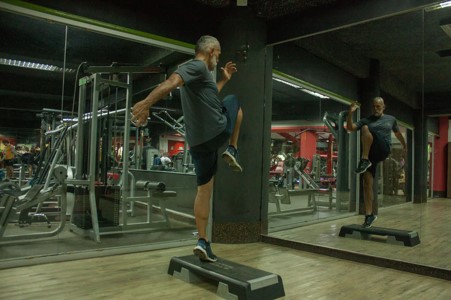Being active and including physical activity in your daily life is key in having a healthy body and mind, but not being safe while doing it can cause awful problems. Everyone is different, and our bodies differ from person to person so a certain activity might not suit everybody! After you find the perfect regime that works for you, depending on your age and form, to begin with, you still might run into some problems along the way. That’s why it’s important to be careful and don’t push yourself too hard if injuries or problems occur it’s always best to talk to a professional about it! Here are some reasons and signs to consider when thinking about physical therapy and why you should go!

What is Physical Therapy?
Physical therapy should be a part of your routine by now, but if you are just starting your fitness and activity journey – you might want to pay attention. A physical therapist is someone who examines and determines the problems and potential causes of your injuries and pain. You don’t need to wait to go to them when experiencing an extreme injury, regular checkups are key too! Read this article to find out more about it, what to expect during your visit, and its benefits. Going and talking to the professionals will help you avoid and treat many problems that might occur on your active journey!
Just in Case
Prevention of problems is always more efficient than solving them later on. The same goes for taking care of your body. If you are a veteran and you’ve been active for a long time or you’re just starting your healthy, active journey – keeping your body in check is key to ensuring your safety. A physical therapy DC expert suggests that getting checked out regularly is needed in order to stay safe. There are plenty of things that could go wrong, and signs that go unnoticed, that could be detected only by a professional – this is why going for regular checkups is important. Better be safe than sorry, it might sound like a hassle going to the doctor for no reason, but it can actually save you time in the long run!Â

Small Signs
When being active, it’s completely normal to sometimes feel pressure or stiffness in your body – but this too can be your body’s way of telling you something is not okay. It’s always good to observe how you feel and keep track of the changes over time, are you feeling a new type of pain? Is the pain not passing after a long period of time? Even if you can function regularly, you still might wanna go and get it checked out just to make sure. Maybe a certain activity is causing this, a professional will determine the cause and help you work around it – this way you’ll know exactly how and what to do. Everybody is different, so don’t compare yourself to others and what they are experiencing, everyone feels pain differently! You know your body best, so keep it safe and don’t push yourself. Ignoring or suppressing a problem might cause you more pain in the long run – know your body and its limits.
If it’s Affecting Your Daily Life
Stiffness and feeling sore after a workout is one thing…but being unable to move from pain is a totally different story. While you are active anything can happen, regardless of how long you’ve been doing this, injuries happen to professional athletes too! It’s important to determine the severity of the pain and the problem you might experience! So here is a guide to help you learn the difference between possible types of injuries that can occur. Once you know this, it’s your responsibility to go to a professional rather than treating it on your own. Even if you can’t determine the exact reason something might hurt, it’s not going away or getting better – should be enough reason to seek professional help.Â
Solving problems and acting on time will ensure your safety in the long run! Physical health is not a joke and it should be taken seriously, doesn’t matter if it’s a minor or major change that occurs in your body, it will eventually lead to bigger problems that might even get dangerous if you just leave them untreated. Getting regular checkups and speaking to professionals should be a part of your routine at this point, but try to see the bigger picture. So no matter how long you’ve been training, or how confident you are that something is insignificant – better be safe than sorry!



Facebook Comments